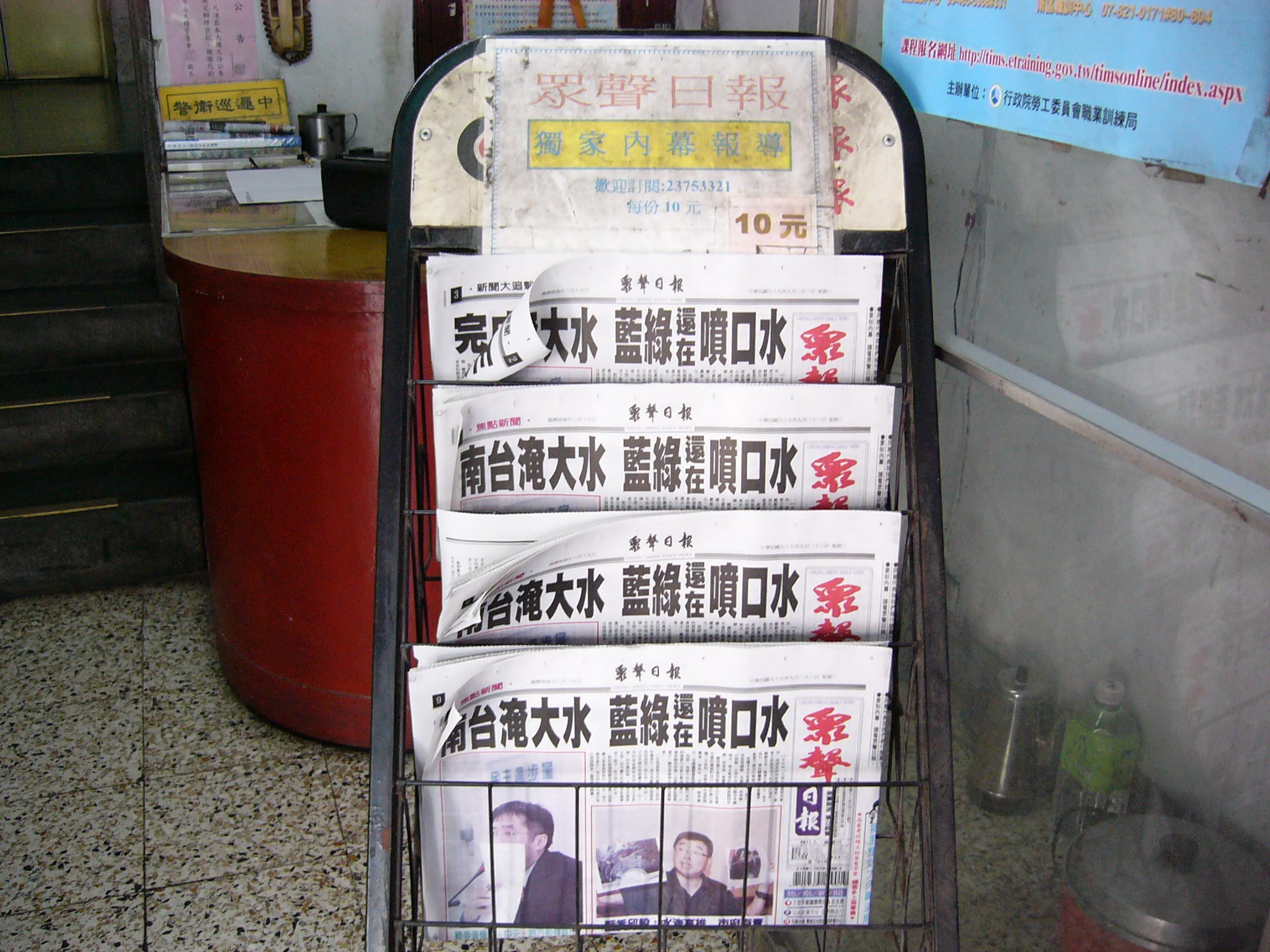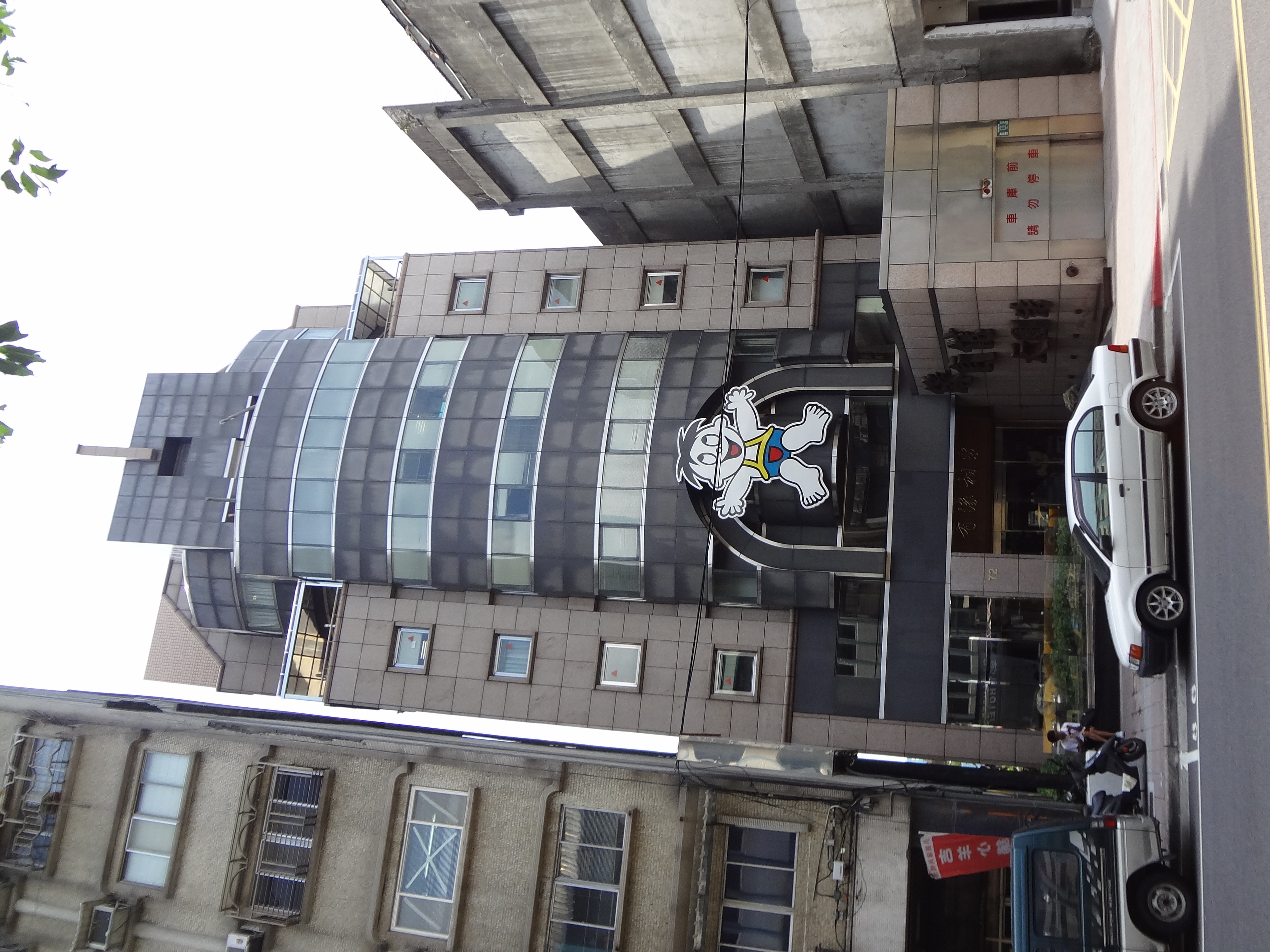|
Apple Daily (Taiwan)
The ''Apple Daily'' ( zh, t=蘋果日報, p=Píngguǒ Rìbào, poj=Pîn-kó Ji̍t-pò) was an online newspaper in Taiwan. It was established as a printed paper and was owned by Hong Kong-based Next Digital media group, which printed the eponymous newspaper in Hong Kong from 1995 to 2021. The Media Group experimented on cartoonifying news with the Next Media Animation, provided animated news stories on scandals and crimes in Taiwan, as well as on pop culture in other parts of the world, and gained a huge success. ''Apple Daily'' published its last printed edition on 17 May 2021, with its internet-based news site remaining in operation until 31 August 2022. History Apple Daily first published on 2 May 2003. It was the first newspaper in Taiwan to publish 365 days a year, and it was the only newspaper in Taiwan subject to the circulation audit from Audit Bureau of Circulations (ROC). Opening the Apple Daily in Taiwan was part of a larger push by parent company Next Media into t ... [...More Info...] [...Related Items...] OR: [Wikipedia] [Google] [Baidu] |
Broadsheet
A broadsheet is the largest newspaper format and is characterized by long vertical pages, typically of . Other common newspaper formats include the smaller Berliner and tabloid–compact formats. Description Many broadsheets measure roughly per full broadsheet spread, twice the size of a standard tabloid. Australian and New Zealand broadsheets always have a paper size of A1 per spread (). South African broadsheet newspapers have a double-page spread sheet size of (single-page live print area of 380 x 545 mm). Others measure 22 in (560 mm) vertically. In the United States, the traditional dimensions for the front page half of a broadsheet are wide by long. However, in efforts to save newsprint costs, many U.S. newspapers have downsized to wide by long for a folded page. Many rate cards and specification cards refer to the "broadsheet size" with dimensions representing the front page "half of a broadsheet" size, rather than the full, unfolded broadsheet spread. S ... [...More Info...] [...Related Items...] OR: [Wikipedia] [Google] [Baidu] |
Formosa Plastics Group
Formosa Plastics Group (FPG, ) is a titular Taiwanese conglomerate of diverse interests, including biotechnology, petrochemical processing and production of electronics components. The company was founded by Wang Yung-ching and his brother Wang Yung-tsai, and is chaired by Lee Chih-tsuen. Despite its name, its holdings include several companies prominent in the high tech electronics sector, including VIA Technologies and Nanya Technology Corporation. History Formosa Plastics Group was formed in 1954 to reflect vertical integration of the PVC manufacturing process by the Formosa Plastics Corporation (FPC). Nan Ya Plastics Processing Corp. was formed to purchase PVC resins produced by FPC. A third member of the group, New Eastern Plastics Product, was formed to manufacture those processed resins into consumer goods. Nan Ya and New Eastern were later merged into a single entity, Nan Ya Plastics Corp., and upstream integration was achieved in the 1990s through the constructio ... [...More Info...] [...Related Items...] OR: [Wikipedia] [Google] [Baidu] |
Chinese-language Newspapers (Traditional Chinese)
Chinese (, especially when referring to written Chinese) is a group of languages spoken natively by the ethnic Han Chinese majority and many minority ethnic groups in Greater China. About 1.3 billion people (or approximately 16% of the world's population) speak a variety of Chinese as their first language. Chinese languages form the Sinitic branch of the Sino-Tibetan languages family. The spoken varieties of Chinese are usually considered by native speakers to be variants of a single language. However, their lack of mutual intelligibility means they are sometimes considered separate languages in a family. Investigation of the historical relationships among the varieties of Chinese is ongoing. Currently, most classifications posit 7 to 13 main regional groups based on phonetic developments from Middle Chinese, of which the most spoken by far is Mandarin (with about 800 million speakers, or 66%), followed by Min (75 million, e.g. Southern Min), Wu (74 million, e.g. Shangh ... [...More Info...] [...Related Items...] OR: [Wikipedia] [Google] [Baidu] |
Publications Established In 2003
To publish is to make content available to the general public.Berne Convention, article 3(3) URL last accessed 2010-05-10.Universal Copyright Convention, Geneva text (1952), article VI . URL last accessed 2010-05-10. While specific use of the term may vary among countries, it is usually applied to text, images, or other content, including paper ( |
Mass Media In Taipei
Mass is an intrinsic property of a body. It was traditionally believed to be related to the quantity of matter in a physical body, until the discovery of the atom and particle physics. It was found that different atoms and different elementary particles, theoretically with the same amount of matter, have nonetheless different masses. Mass in modern physics has multiple definitions which are conceptually distinct, but physically equivalent. Mass can be experimentally defined as a measure of the body's inertia, meaning the resistance to acceleration (change of velocity) when a net force is applied. The object's mass also determines the strength of its gravitational attraction to other bodies. The SI base unit of mass is the kilogram (kg). In physics, mass is not the same as weight, even though mass is often determined by measuring the object's weight using a spring scale, rather than balance scale comparing it directly with known masses. An object on the Moon would ... [...More Info...] [...Related Items...] OR: [Wikipedia] [Google] [Baidu] |
2003 Establishments In Taiwan
3 (three) is a number, numeral and digit. It is the natural number following 2 and preceding 4, and is the smallest odd prime number and the only prime preceding a square number. It has religious or cultural significance in many societies. Evolution of the Arabic digit The use of three lines to denote the number 3 occurred in many writing systems, including some (like Roman and Chinese numerals) that are still in use. That was also the original representation of 3 in the Brahmic (Indian) numerical notation, its earliest forms aligned vertically. However, during the Gupta Empire the sign was modified by the addition of a curve on each line. The Nāgarī script rotated the lines clockwise, so they appeared horizontally, and ended each line with a short downward stroke on the right. In cursive script, the three strokes were eventually connected to form a glyph resembling a with an additional stroke at the bottom: ३. The Indian digits spread to the Caliphate in the 9th ... [...More Info...] [...Related Items...] OR: [Wikipedia] [Google] [Baidu] |
Defunct Newspapers Published In Taiwan
{{Disambiguation ...
Defunct (no longer in use or active) may refer to: * ''Defunct'' (video game), 2014 * Zombie process or defunct process, in Unix-like operating systems See also * * :Former entities * End-of-life product * Obsolescence Obsolescence is the state of being which occurs when an object, service, or practice is no longer maintained or required even though it may still be in good working order. It usually happens when something that is more efficient or less risky r ... [...More Info...] [...Related Items...] OR: [Wikipedia] [Google] [Baidu] |
Media Of Taiwan
The mass media in Taiwan is considered to be one of the freest and most competitive in Asia. Cable TV usage is high (around 80%) and there is also a wide selection of newspapers available covering most political viewpoints. Taiwan's media history While Taiwan's media freedom may rank among the top few nations in Asia today, its progress to its current state of vibrancy was not without a struggle. The Japanese occupation of Taiwan from 1895 to 1945 did not slow down the pace of economic modernisation on the island; the Kuomintang (KMT, Nationalist Party) also built on the successes of its predecessors to modernize and this provided the basis for its mass media industry to develop. However, KMT's pursuit of economic progress and democratic ideals did not automatically mean that Taiwan's media could fulfill its role as the fourth estate of democracy, as a check on the government. The martial law era media was kept on a tight leash and the explicit prohibition from enquiring about then ... [...More Info...] [...Related Items...] OR: [Wikipedia] [Google] [Baidu] |
Tiananmen Square Protest Of 1989
The Tiananmen Square protests, known in Chinese as the June Fourth Incident (), were student-led demonstrations held in Tiananmen Square, Beijing during 1989. In what is known as the Tiananmen Square Massacre, or in Chinese the June Fourth Clearing () or June Fourth Massacre (), troops armed with assault rifles and accompanied by tanks fired at the demonstrators and those trying to block the military's advance into Tiananmen Square. The protests started on 15 April and were forcibly suppressed on 4 June when the government declared martial law and sent the People's Liberation Army to occupy parts of central Beijing. Estimates of the death toll vary from several hundred to several thousand, with thousands more wounded. The popular national movement inspired by the Beijing protests is sometimes called the '89 Democracy Movement () or the Tiananmen Square Incident (). The protests were precipitated by the death of pro-reform Chinese Communist Party (CCP) general secretary Hu ... [...More Info...] [...Related Items...] OR: [Wikipedia] [Google] [Baidu] |
Want Want
Want Want Holdings Limited (Want Want; ) is a food manufacturer from Taiwan. It is one of the largest rice cake and flavored drink makers in Taiwan. It engages in the manufacturing and trading of snack foods and beverages, divided into four businesses: rice crackers, dairy products and beverages, snack foods (candies, jellies, popsicles, nuts, and ball cakes), and other products (mainly wine). It operates over 100 manufacturing plants in mainland China and 2 in Taiwan, and employs over 60,000 people. History In 1962, Want Want began operations in the name of I Lan Foods Industrial Company Limited () in Yilan County, Taiwan, which manufactured canned agricultural products. It was founded by Tsai Eng-meng's father, Jonathan Shuai Qiang Ng. Tsai Eng-meng took over his father's food business at the age of 19 and came up with a new product—crackers made from rice flour. 1983, it collaborated with Iwatsuka Confectionery Company Limited, one of the top three Japanese rice cr ... [...More Info...] [...Related Items...] OR: [Wikipedia] [Google] [Baidu] |




.jpg)
